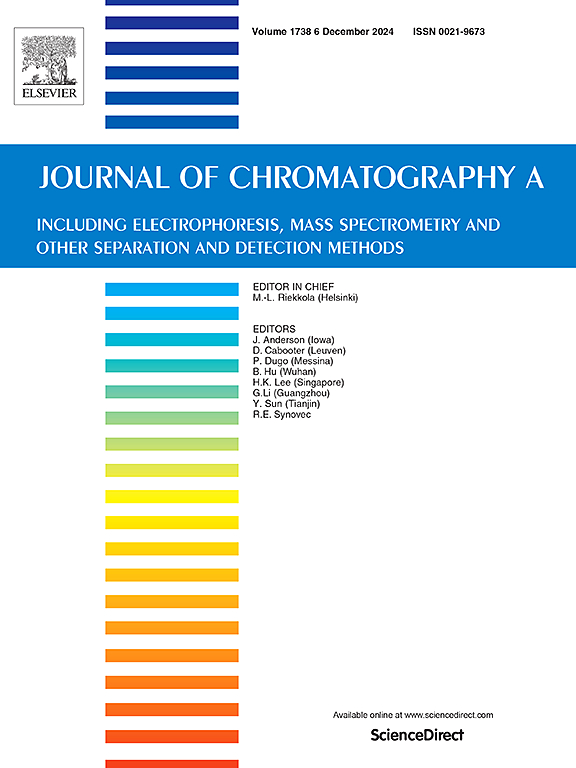Implementation of multimodal anion exchange chromatography to address product quality challenges and downstream platform limitations: A case study
IF 4
2区 化学
Q1 BIOCHEMICAL RESEARCH METHODS
引用次数: 0
Abstract
Flow through anion exchange chromatography (AEX) has provided reliable process-and product-related impurities removal as well as viral clearance for monoclonal antibodies (mAbs). The application of AEX to molecules with more complex impurity profiles or non-platform characteristics such as a low pI can become challenging because viral clearance considerations often constrain the AEX step design space. Multimodal anion exchange chromatography (MMAEX) can address the limitations of the platform AEX step while still allowing a “platform-like” manufacturing process. This work presents a case study on polishing step development for a Fc-fusion protein with pI < 6.5, high surface hydrophobicity, and aggregate content of up to 35% in the harvested cell culture fluid. An integrated computational and experimental high throughput screening (HTS) workflow was implemented to rapidly identify the MMAEX resin Capto Adhere at pH 5.5 as a viable alternative to the conventional AEX flow through polishing step. This work presents the impact of pH, conductivity, load, and load impurity level/composition on MMAEX step performance. Step performance was measured based on yield, HMW clearance, residual HCP and DNA clearance, as well as viral clearance. HMW clearance varied based on the starting load HMW level (from 5 -35%) and the highest relative clearance was obtained at a moderate HMW load level. Residual HCP and DNA showed a strong dependance on load HMW level, highlighting the competitive adsorption behavior that can impact resin-protein interactions in complex mixtures. Both residual HCP and DNA were removed to below quantification at pH 5.5. Viral clearance of up to 4 logs of XMULV and MVM was demonstrated at pH 5.5 using process relevant feed streams. The workflow presented here demonstrates how the integration of in silico modeling and high throughput screening (HTS) can streamline process development and enable rapid polishing step optimization. These results also underscore the impact of feed impurity and impurity composition on MMAEX resin performance.
实施多模态阴离子交换色谱以解决产品质量挑战和下游平台限制:一个案例研究
通过阴离子交换色谱(AEX)的流动为单克隆抗体(mab)提供了可靠的过程和产品相关杂质去除以及病毒清除。AEX应用于具有更复杂杂质谱或非平台特征(如低pI)的分子可能变得具有挑战性,因为病毒清除考虑通常限制了AEX步骤设计空间。多模态阴离子交换色谱(MMAEX)可以解决平台AEX步骤的局限性,同时仍然允许“类似平台”的制造过程。本文介绍了一个与pI <融合的fc -融合蛋白的抛光步骤开发的案例研究;6.5,高表面疏水性,在收获的细胞培养液中聚集体含量高达35%。采用集成的计算和实验高通量筛选(HTS)工作流程,快速识别pH为5.5的MMAEX树脂Capto粘附,作为常规AEX流通过抛光步骤的可行替代方案。这项工作介绍了pH、电导率、负载和负载杂质水平/组成对MMAEX阶跃性能的影响。根据产量、HMW清除率、残留HCP和DNA清除率以及病毒清除率来衡量台阶性能。HMW间隙根据启动负荷HMW水平(从5 -35%)而变化,在中等HMW负荷水平时获得最高的相对间隙。残余HCP和DNA显示出对负载HMW水平的强烈依赖,这突出了在复杂混合物中影响树脂-蛋白质相互作用的竞争吸附行为。在pH 5.5下去除残留的HCP和DNA至定量以下。在pH为5.5的条件下,使用与过程相关的饲料流,可以清除多达4个log的XMULV和MVM病毒。这里介绍的工作流程演示了如何集成硅建模和高通量筛选(HTS)可以简化工艺开发并实现快速抛光步骤优化。这些结果也强调了饲料杂质和杂质组成对MMAEX树脂性能的影响。
本文章由计算机程序翻译,如有差异,请以英文原文为准。
求助全文
约1分钟内获得全文
求助全文
来源期刊

Journal of Chromatography A
化学-分析化学
CiteScore
7.90
自引率
14.60%
发文量
742
审稿时长
45 days
期刊介绍:
The Journal of Chromatography A provides a forum for the publication of original research and critical reviews on all aspects of fundamental and applied separation science. The scope of the journal includes chromatography and related techniques, electromigration techniques (e.g. electrophoresis, electrochromatography), hyphenated and other multi-dimensional techniques, sample preparation, and detection methods such as mass spectrometry. Contributions consist mainly of research papers dealing with the theory of separation methods, instrumental developments and analytical and preparative applications of general interest.
 求助内容:
求助内容: 应助结果提醒方式:
应助结果提醒方式:


